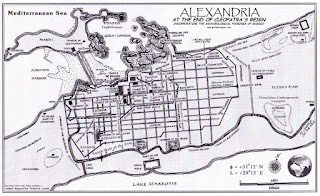Theban Legion
Egypt's Coptic history is an important stage in the history of Egypt, which began in the first century AD. However, the roots of Coptic culture extend back to ancient Egypt.
The Coptic language, which is still used in the Egyptian Coptic Church, is the last stage in the development of the ancient Egyptian language, which the Egyptians wrote and read from 5000 years ago.
Egyptians continued to use their Coptic language more than a century after the Arabs entered Egypt, and so far there are many words of the Coptic language still used in the Egyptian tongue.
We must know that the history of the Copts of Egypt in its "ethnological" and "theological" concept is part of the history of Egypt, which extends throughout the ages. Coptic history is a common culture for all Egyptians of all faiths.
Christianity entered Egypt in the first half of the first century AD at the hands of St. Mark, and with the passage of time and because of the conviction of the new religion, the number of Coptic Christians increased and the number of Copts decreased among followers of the traditional Egyptian religion.
Egypt was followed by the Roman Empire, and later the Gospel of the Egyptians and founded a church in Alexandria headed by an Egyptian Bishop named Demetrius (189 - 231) ..
From the beginning of the third century, Christianity spread widely in Egypt, especially in Upper Egypt and the Middle East, "Fayoum and Bahnasa".
The author of this expansion of the new religion persecuted the religious Romans to its owners, under the fears and motives of many of the Roman authority, and our story today is a story of the persecution, in what is known as the "Tibi Battalion" ...
"Tiba" is a great story of the Egyptian struggle related to the late history of the Roman Empire and its relationship with Egypt, its then rich colony ...
It was at the head of the empire at that time "Diocletian" (284-305 AD) - who began the Coptic calendar at the time of his rule because of his extreme religious persecution of the Egyptians and called his era the era of the martyrs - assisted by "Maximianus" (285-305) and the army of all peoples under their authority.
One of the battalions of the youth of the city of "Tiba", consisting of 6600 Egyptian Coptic soldiers led by "Morris" battalion officer and was a battalion is known for its efficiency, courage and strength ..
It was ordered to travel from Egypt to Europe to help Maximianos in his wars in the region of Ghalia, present France, in the third year of the martyrs year,
Before the clash, when the army arrived at Oktudor on the River Ron near Lake Geneva in Switzerland, they refused the cult of the pagan emperor by ordering evaporation of the idols and considering Dukalidian as a god before the war began, because they condemned Christianity to reject it.
The courageous leader of the Mauritanian leader Maurice said he sent the emperor a letter in Coptic - one of the means of resistance to the Romans, referring to his adherence to his religion and identity - that he was willing to accept anything from the fighting in defense of the empire.
Despite the division of the battalion into the ranks of ten individuals and was flogging and killing the tenth of them, but the officers were encouraging their soldiers to prove their faith. And ended the execution of the entire battalion in the "Valley of Agon" under the current "Switzerland" ....
In commemoration of this great position, the inhabitants of the valley changed the name of the city of Agon and called it St. Maurice in the province of Valais.
The martyrdom of the Egyptian soldiers, coupled with the courage, steadfastness and manhood - all this filled the audience admiration and appreciation of them, and was pushing them to ask about the secret of this greatness ..
Thus began the transformation of the population of these areas of paganism to Christianity, and the names of many members of the battalion in various cities and villages, led by the commander,
"Morris", which was named two cities:
The first is "St. Maurice" and the second is "St. Moritz" (in German pronunciation) in the province of "Ingrid" in Switzerland .. I have a statue in a large square ..
The official seal of some Swiss provinces was engraved by three men of the battalion, and the memory of some of these are considered official holidays.
The district of Zurich chose its logo and stamped three pictures of the heroes of this Tayebian battalion, Felix, his sister Jigula and Akper Anitaus, carrying their heads under their arms.
It is worth mentioning that the battalion was accompanied by "Saint Verena" - good fruit in the Coptic - which had a direct impact on the population there, which is believed to be the cousin of the Egyptian leader, "Morris".
There are 70 churches in Switzerland and 30 in Germany. In addition to a statue in one hand, a jar of water and the other comb - the ancient Egyptian tradition - in reference to teaching them what the fundamentals of cleanliness and washing ...!


Comments
Post a Comment